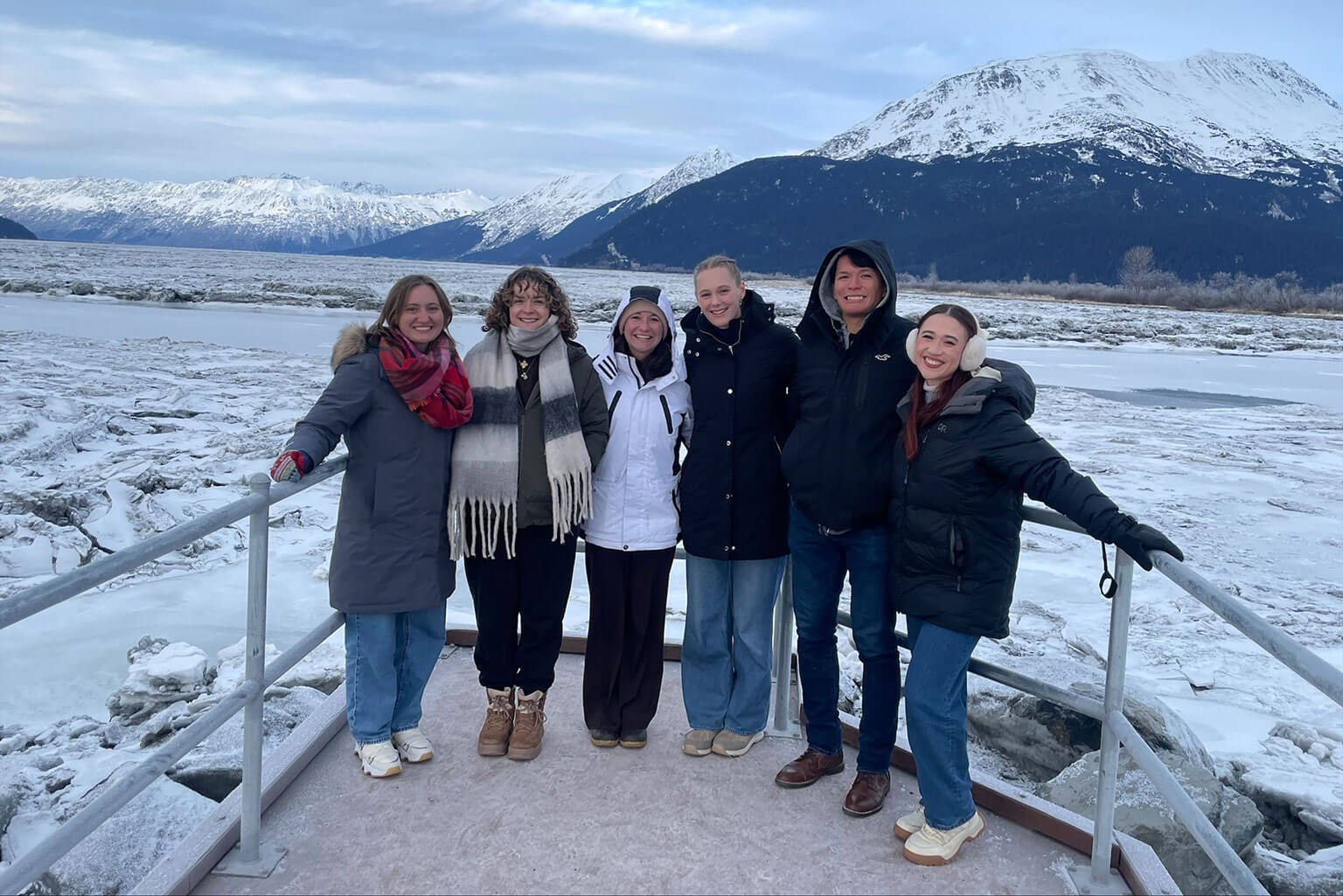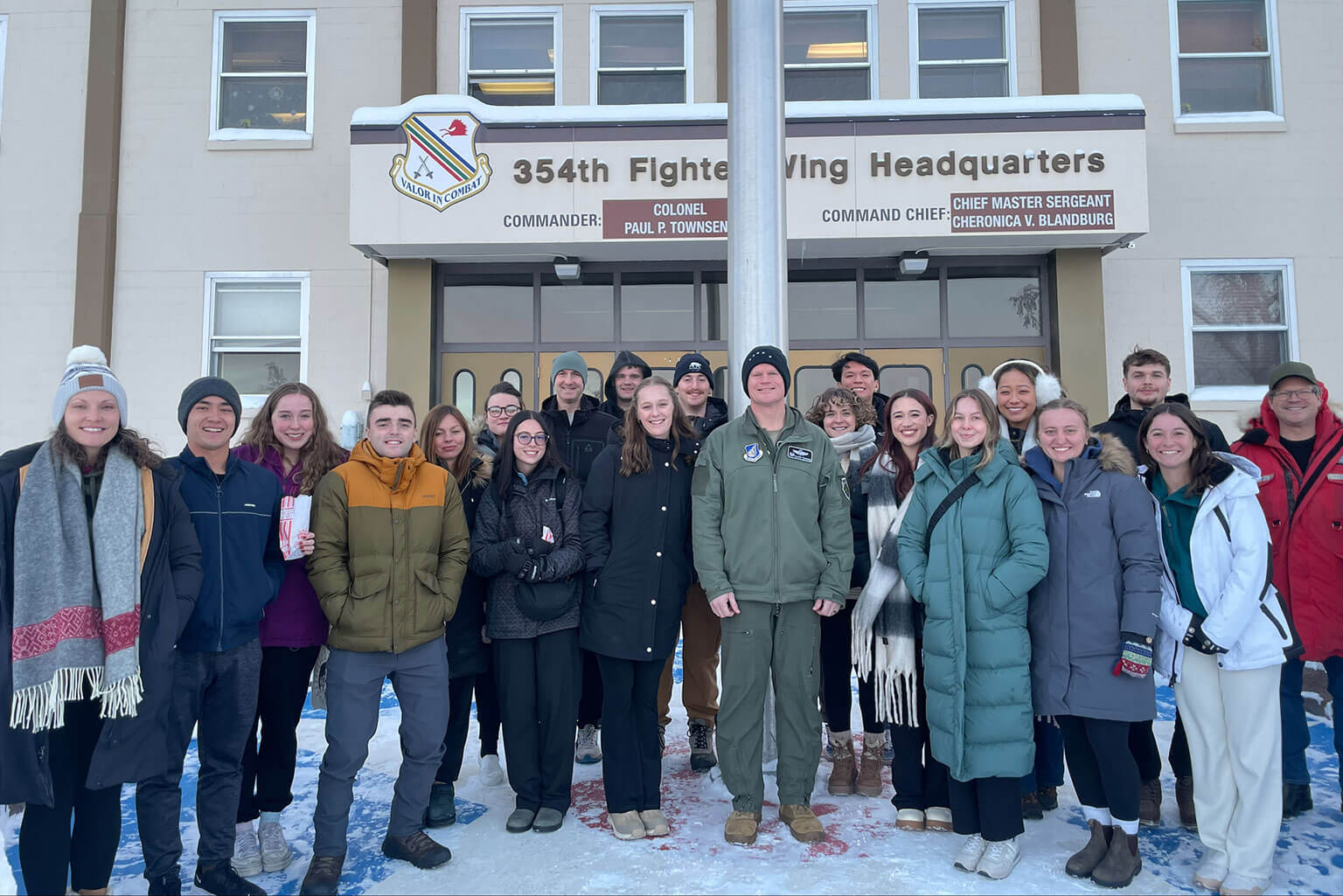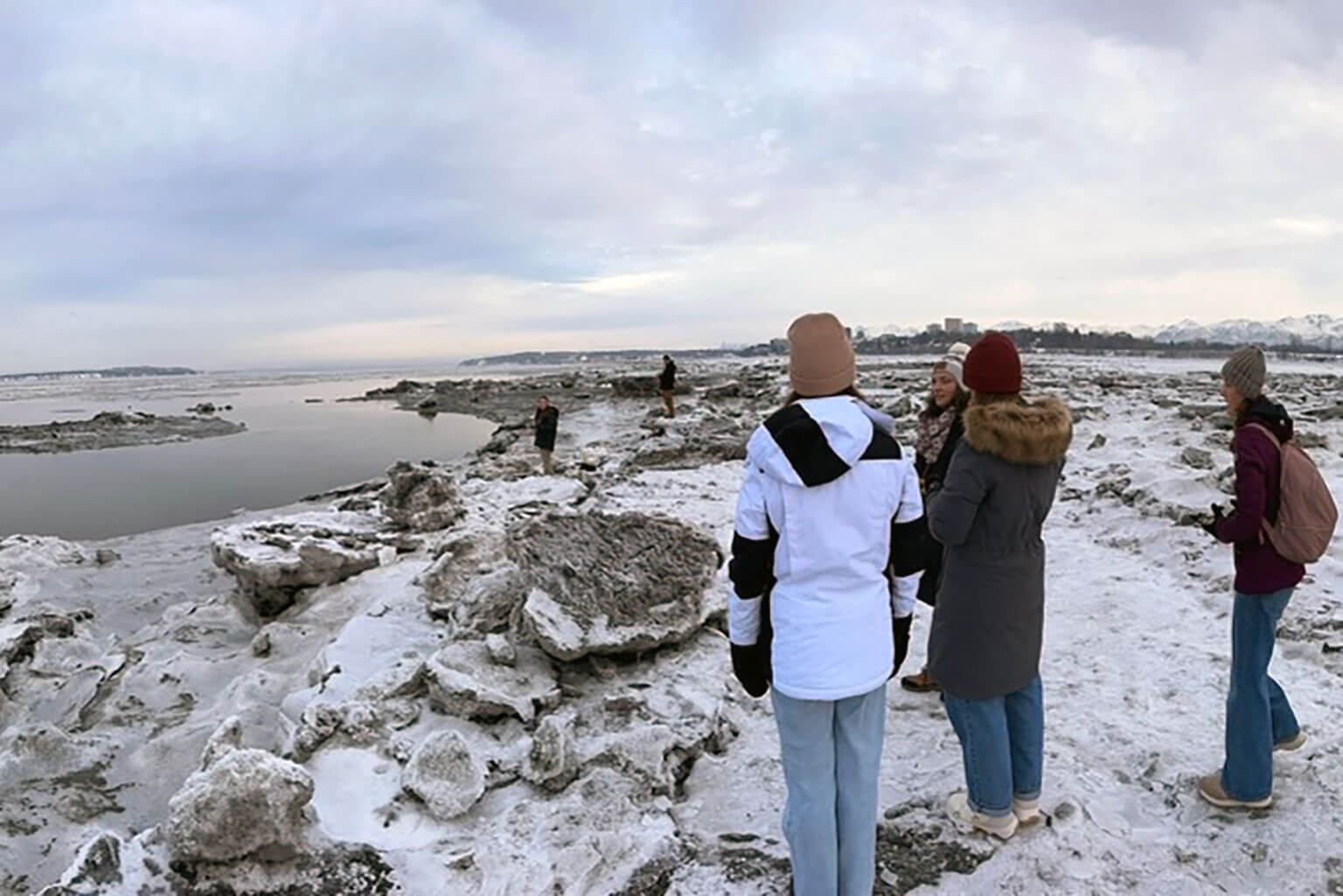Arctic research examines impact on operational readiness

Cadets 2nd Class Anna Bardorf, Emma Bingen and Jordan Martinez stand with Cadets 1st Class Billie Botes, Colby Deleeuw and Kelsey Monaghan-Bergson on the Turnagain Arm Scenic Boardwalk at the Alaska Wildlife Conservation Center in Anchorage, Nov. 28, 2024. The U.S. Air Force Academy Department of Behavioral Sciences and Leadership’s Yukon Field School trip taught the cadets to identify potential challenges for future warrior leaders assigned to the region. (Courtesy photo provided by Capt. Samantha Van Cleave)
By Randy Roughton
U.S. Air Force Academy Strategic Communications
U.S. AIR FORCE ACADEMY, Colo. – As global interest in the Arctic escalates, the U.S. military prioritizes warfighter preparedness for one of the world’s most extreme environments. U.S. Air Force Academy warrior scholars are at the forefront of research to help ensure operational readiness and mission success in the region.
Ten cadets and 12 Canadian academics representing the North American and Arctic Defense and Security Network participated in an Arctic immersion designed to deepen understanding of homeland defense from a northern perspective.
A growing threat in the Arctic
“Before taking this class [Influence and Persuasion, Behavioral Science 314], I never gave a second thought about the Arctic,” said Cadet 2nd Class Anna Bardorf, a behavioral sciences and leadership major. “The impact of climate change is making the Arctic a prevalent future threat as potential adversaries find the area more navigable with the melting ice. It is important for our warfighters to understand this reality before it becomes an even larger threat to our national security.”

U.S. Air Force Academy cadets pose for a photo outside the 354th Fighter Wing Headquarters at Eielson Air Force Base, Alaska, during the fall semester. The Department of Behavioral Sciences and Leadership’s Yukon Field School trip taught the cadets to identify potential challenges for warfighters assigned to the Arctic. (Courtesy photo provided by Capt. Samantha Van Cleave)
Cadets participate in Yukon Field School research
Department professors Capt. Samantha Van Cleave, Dr. Richard Niemeyer and Lt. Col. Steven Lizzol led the cadet research excursions to Alaska and Canada over Thanksgiving break. The cadets examined how indigenous communities thrived for centuries in the Arctic and how non-native populations can adapt to the extreme cold. Additionally, they compared cognitive processing in temperate climates with that of in extreme cold to identify potential challenges for future warfighters assigned to the Arctic region.
“Historically, the Arctic has been something that we only saw as passing through or over as with strategic missiles,” Van Cleave said. “Because of climate change and human movement globally, the threats are no longer just through the Arctic; they are through, to and in the region. We organized this trip to help cadets grasp the vastness of the Arctic so they could appreciate the uniqueness of its different cultures.”

U.S. Air Force Academy cadets stand with Capt. Samantha Van Cleave on the frozen mudflats overlooking the Cook Inlet in Anchorage, Alaska, Nov. 24, 2024. The Department of Behavioral Sciences and Leadership’s Yukon Field School trip taught the cadets to identify potential challenges for future warrior leaders assigned to the Arctic. (Courtesy photo provided by Capt. Samantha Van Cleave)
Highlights range from visiting World War II tunnel to Eielson commander meeting
During the trip, cadets explored a World War II-era permafrost tunnel built by the U.S. Army Corps of Engineers, met Col. Paul Townsend, 354th Fighter Wing commander and participated in a wargaming exercise. They concluded their trip with Thanksgiving dinner with the First Ranger Patrol Group in Whitehorse, Yukon.
“One thing that struck me on our trip that I’d never considered until we visited Eielson and talked to the commander was how our access to the Arctic sits compared to other big powers,” said Cadet 2nd Class Spencer Siefker. “(Townsend) talked to us about how we would respond to threats in the Pacific out of Alaska. I realized how further investment in the Arctic is becoming a more central focus point.”
Cadets gain information on supporting warfighters in the Arctic
Future excursions will inform the Department of Defense on how best to support warfighters assigned to these isolated and extreme posts. This will enhance homeland defense initiatives in the Arctic region. In terms of military strategy, understanding the region is paramount as it has increasing geopolitical importance.
“One of the things that will definitely help me in my future career as an officer is to be Arctic-minded, even if I don’t end up stationed in Alaska or the region,” said Siefker. “It will be a huge benefit to my ability to think about issues and problems in a different way.”